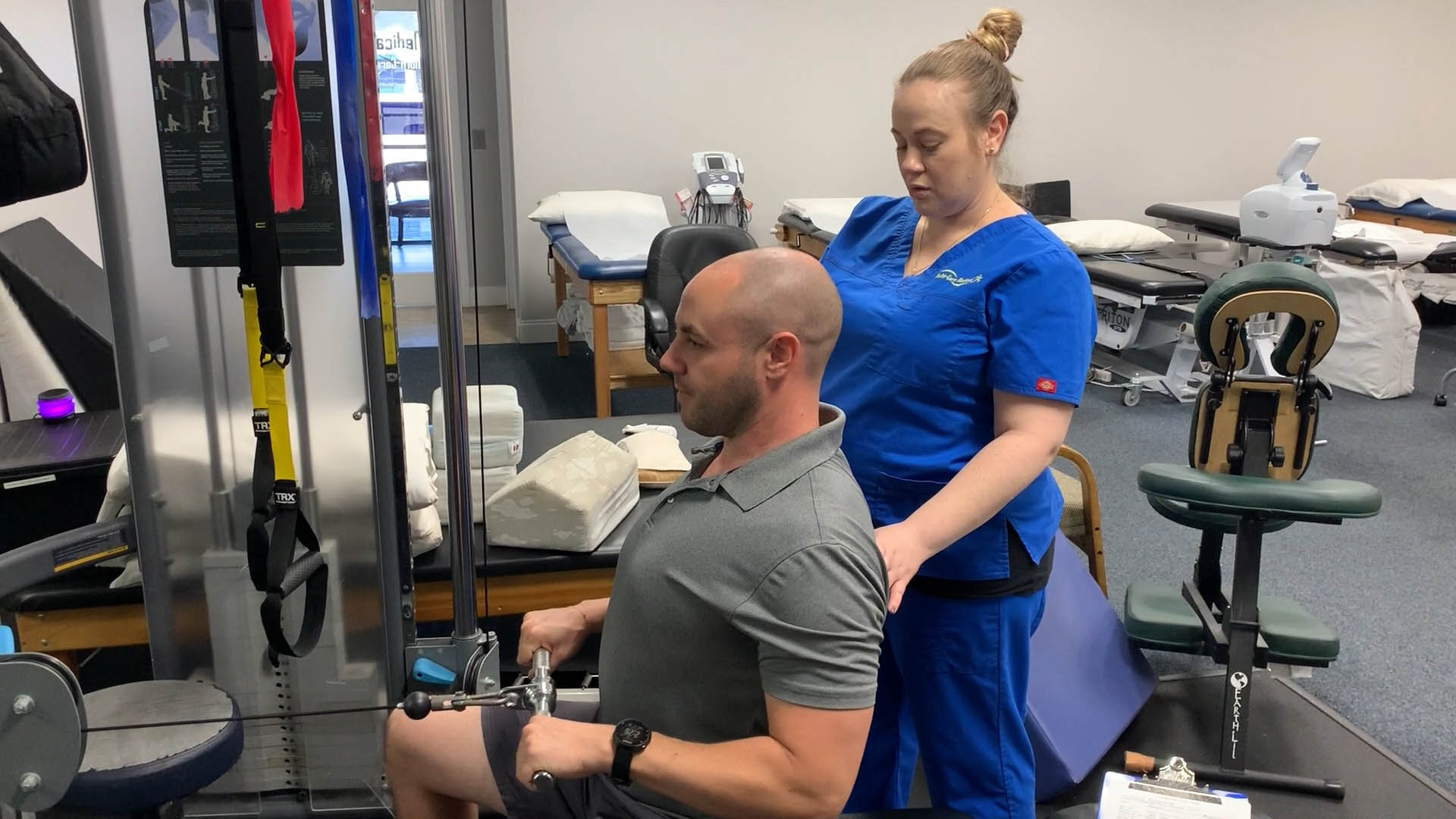What conditions do physical therapists treat?
Our patients seek physical therapy for a variety of conditions, such as:
Neck or Back Pain: Back and neck pain are very common and may result from weak muscles elsewhere in the body. Over a number of years, something as seemingly minor as poor posture can lead to chronic pain. Physical therapy can help correct these issues.
Pain Caused by an Accident: There are many injuries that can occur in car accidents; whiplash is one of the most common. Victims often get headaches, have back pain, and are stiff in a number of other areas. Recovery may involve short or long-term rehabilitation.
Injury: Stress from repetitive motion, trauma, sprains, strains, and broken bones can all cause debilitating pain. Furthermore, there is a serious risk of reinjury during and after healing. Even an old injury may cause pain later in life. Physical therapy can help you safely rebuild your body for the long haul so you can get back to your daily routine.
Before or After Surgery: Many surgeries include physical rehabilitation as part of the recovery process. Your surgeon may also require physical therapy to prepare you for the procedure.
Stroke or Paralysis: A stroke or partial paralysis can make movement difficult. Our program can help you regain independence and return to your daily routine. Improve your strength, balance, and dexterity in a supportive, caring environment.
What does a physical therapist do?
Our physical therapists offer a variety of treatments, including but not limited to:
Interventional Pain Management: We use a sophisticated combination of techniques to resolve extreme pain, typically when conventional methods have been ineffective. Some approaches include facet joint injections, nerve blocking – which disrupts the flow of pain signals – and neuroaugmentation treatments such as spinal cord stimulation.
Orthopedic Rehabilitation: This type of therapy focuses on restoring the musculoskeletal system. It targets areas such as bones, joints, tendons, and ligaments. Some of the most common orthopedic treatment includes strength training, stretching, exercise, joint mobilization, and muscle stimulation.
Neurological Rehabilitation: This treatment strategy that supports rehabilitation by improving brain and nervous function, including cognition, communication, and mobility. It is often used to help restore function for a patient who has suffered a severe accident, injury, or degenerative disease. It is a long-term, multifaceted approach to achieving optimal day-to-day functioning and quality of life.
Geriatric Rehabilitation: Suitable for older patients, geriatric therapy helps address common issues that come with age, such as arthritis, cancer, osteoporosis, Alzheimer’s disease, balance disorders, hip and joint replacement, as well as incontinence. This type of treatment aims to reduce discomfort, reestablish mobility, and improve the fitness of elderly patients.
Cardiopulmonary: Cardiovascular and pulmonary therapy target some
cardiovascular conditions, such as heart attacks, chronic obstructive pulmonary disease, and pulmonary fibrosis. We work with patients to improve their endurance and function through appropriate exercise.
Pediatric: Pediatric physical therapy aims to help infants, toddlers, children, and teens suffering from conditions, such as birth defects, developmental delays, genetic disorders, head trauma, muscle disease, and more. By using therapeutic exercises and treatments, therapists help young patients ease the pain, regain strength, and improve the overall natural movements of the body.


